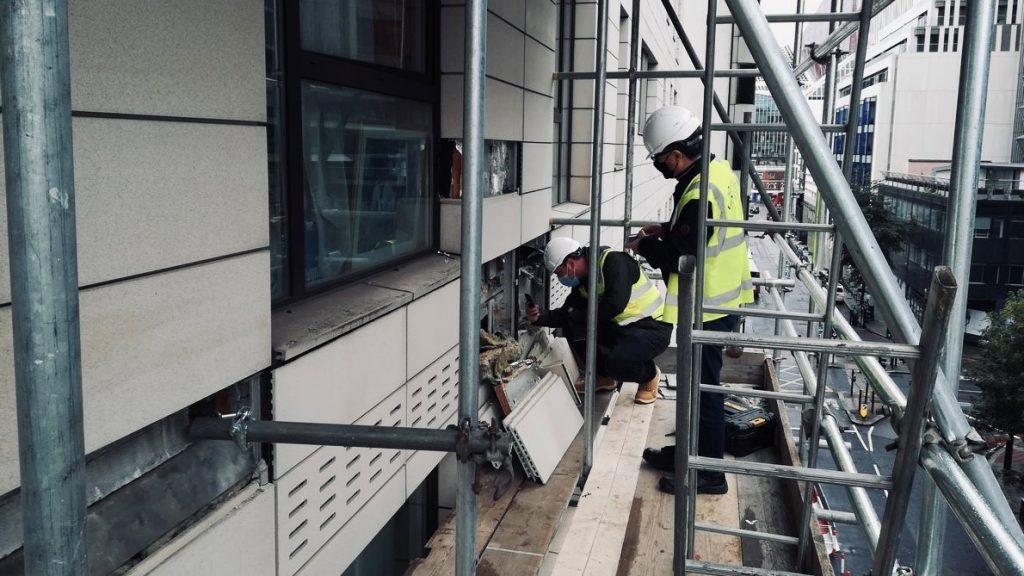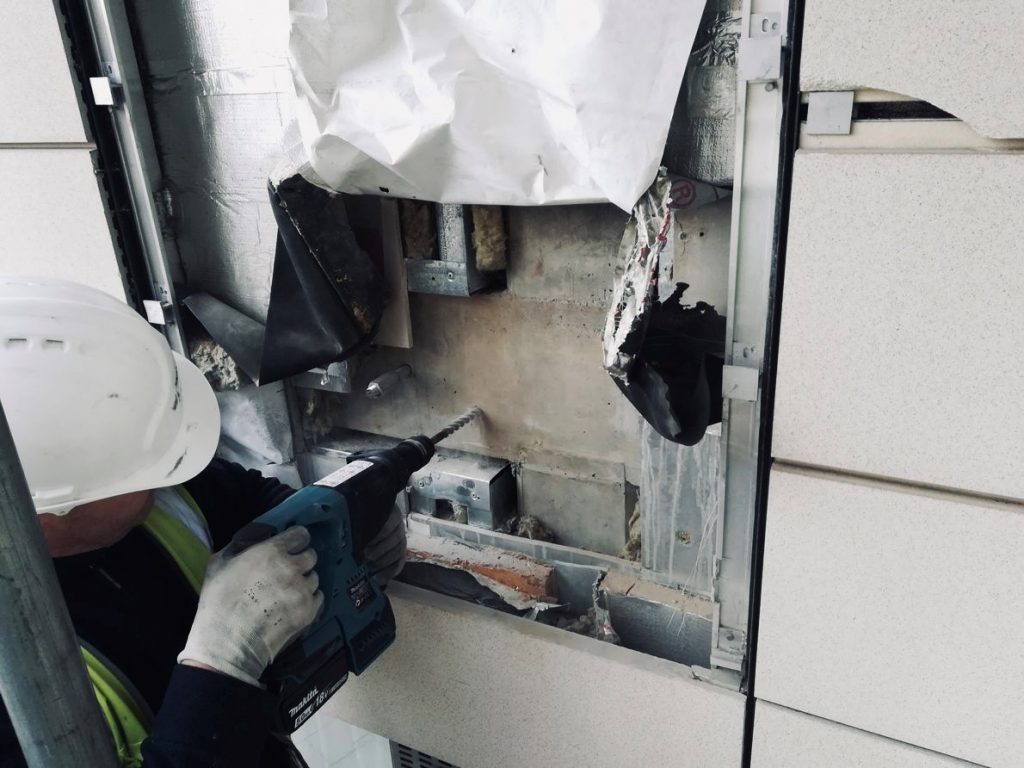External Wall – Advice Note 1
Undertaking Inspections
Following the Building a Safer Future (Hackitt) report and the Draft Building Safety Bill – reviews of external walls on high rise buildings have been undertaken across the breadth of the UK. John Rowan and Partners has been supporting clients to review their buildings and as part of this have established a clear best practice approach to ensure consistency across the housing sector. To support this, we have developed this advice note to share our tried and tested approach to investigations…

We have been carrying out external wall inspections across our client’s assets for both new builds and reviews of existing buildings. We often get asked about our process and with that in mind, we wanted to share our approach to help bring some consistency and best practice to the process.
It is well known that many building owners have already addressed the issues associated with high-rise buildings, but now attention is switching to so-called ‘mid-rise’ buildings where external cladding and fire safety issues are, of course, just as important.
Drawing on our experience, we’ve come up with a two-stage process. We developed this by working closely with clients like registered providers, local authorities and private entities to enable them to understand the details of both the material used in external wall construction and critically, whether the entire system has been designed, installed and maintained appropriately.
Stage 1 – the review
Stage one is a comprehensive desktop review. This embraces all the existing O&M information on each project and includes all design details, materials and product selection, contract form, and all the consultants, contractors and sub-contractors involved.
The goal here is to identify the materials designed and expected to be – or already – installed on the building. The resulting design system can then be checked to confirm whether it meets government and British Standard classifications and tests.
There’s no substitute, in our minds, for seeing the real thing, so as part of our stage one assessment, we always carry out a site visit to undertake a full visual survey of the property. This allows us to establish the details of any materials used in the construction of external walls, the amount and location of any varying cladding types, and the existence and location of any balconies and spandrels.
At the same time, we’re able to identify the most appropriate locations for intrusive investigations of the external wall system. This includes planning how they might be accessed, and noting any issues that might arise when removing sections of external wall for inspection.
All this information is collated into a report comprising both a review and recommendations for action, which can then be shared with the building occupants.
Depending on the availability of existing building information it may be possible to engage the services of a fire engineer at this point to carry out their own review. However, our experience suggests that it is usually necessary to carry out additional investigation to confirm the details of materials used and the quality of their installation.

Stage 2 – the comprehensive investigation
Once all the elements of stage one have been completed, we move on to stage two – at which point we make intrusive investigations of the existing external wall to check whether the entire system has been correctly installed and maintained, in line with Ministry of Housing, Communities & Local Government (MHCLG) advice for owners of multi storey, multi occupied residential blocks.
We oversee and manage the careful removal of sections of the wall system(s) from key points such as compartment lines, windows and service penetrations. This detailed approach makes it possible for us to verify whether the system has been installed in line with the manufacturer’s guidelines and in accordance with the latest fire safety test data.
At the same time, we can identify the presence and condition of fire barriers at key compartment lines and around openings.
Once we’ve completed the intrusive investigations, we produce a comprehensive report. This provides a summary of all the relevant legislations, and details the result, noting any non-conformances and recommending the remedial plan.
A clear plan forward
This approach gives our clients a clear understanding of the nature and extent of any deficiencies and defects, and provides the detail and clarity needed in order to address any issues. For some of our clients, we offer a third stage – whereby a fire engineer can be engaged to interpret our findings and provide remedial solutions. Where no such necessary works are identified, then it may be possible to obtain an EWS1 Form to satisfy mortgage lenders, via a competent fire engineer
This is also the time to address remedial action plans, part of this is helping to match clients to suitable designers and provide advice on likely costs and programme implications. A key role is to also lead negotiations with parties connected with the original contract where losses may need recouping.
Our experience tells us that this standardised, consistent approach gives clients the assurance they need that all the correct steps are being taken to protect building occupants, their assets, and their reputations.
If you have any questions about your building safety projects or would like to find out more information, please get in touch with either Gurpal Virdee or Calum Pearse.
Calum Pearse: cpearse@jrp.co.uk
Gurpal Virdee: gvirdee@jrp.co.uk
Next – tendering and procurement: For more information on how to move projects forwards efficiently, and in compliance with internal and external governance requirements, see our External Wall advice note 2…
